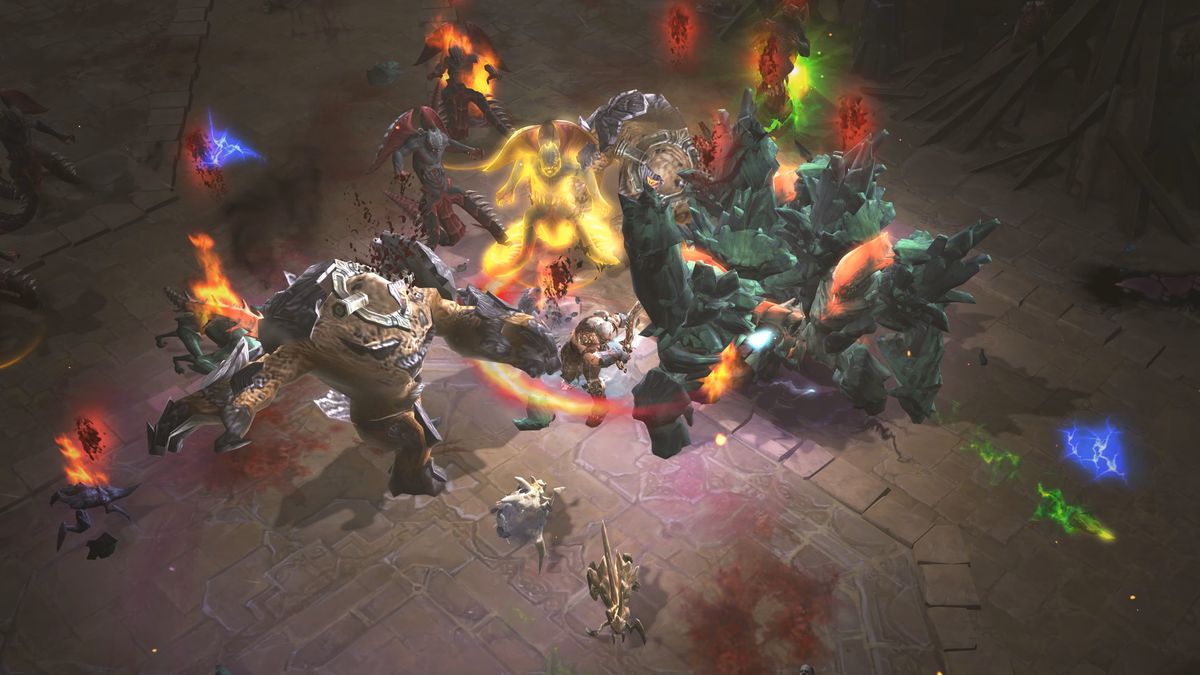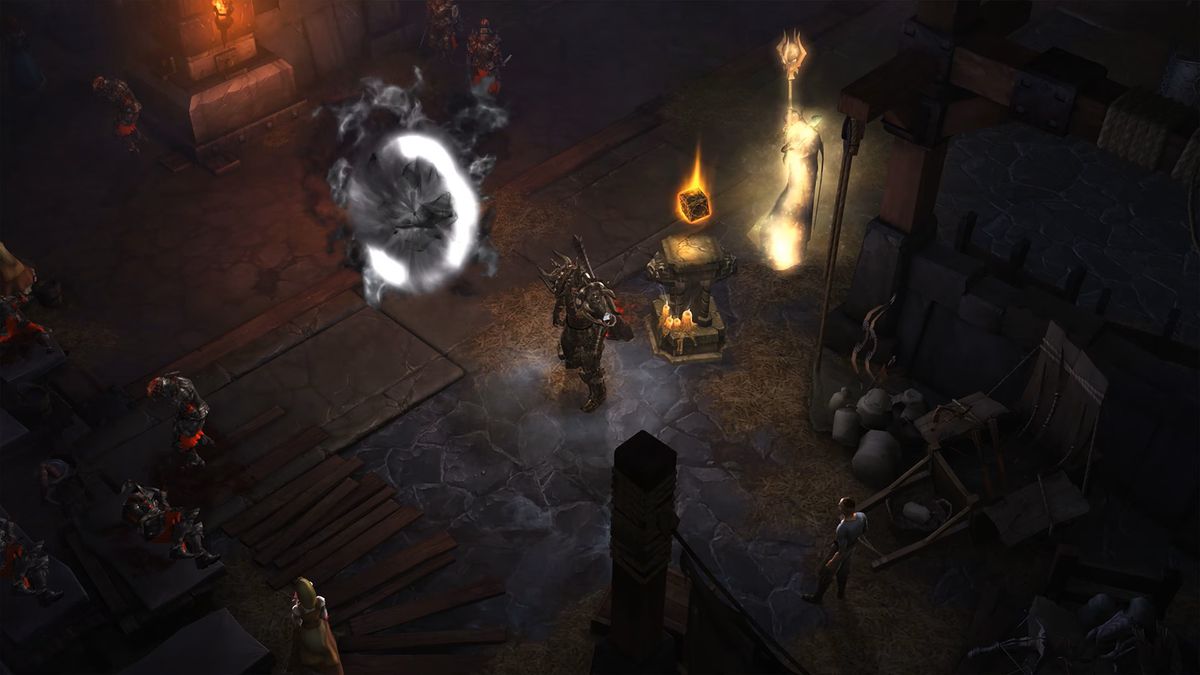Diablo 3’s final season demonstrates everything Diablo 4 gets wrong
Diablo 3 is not obsolete. But the 11-year-old game is now the oldest of the four – yes, four — The Diablo games that Blizzard currently operates (the others being Diablo 4, Diablo ImmortalAnd Diablo 2 resurrected), and the developer decided it was time to bring him into a sort of semi-retirement phase.
But first, there is a swan song. September 15 marked the launch of the game’s 29th season, “Visions of enmity”, which will be the last season to have its own theme and all new content. Patches and technical support will continue beyond this point, but starting in Season 30, Diablo 3 will begin cycling through old seasonal content every three months, resting on its laurels like a legendary band spinning their greatest hits.
In all honesty, the seasons Diablo 3 were never that important in the first place – beyond the familiar call of a fresh start, an excuse to launch a new character and start all over again. Blizzard only added seasons to the game in 2014, after the release of the wonderful course-correcting expansion. Soul Reaper, and gradually fleshed them out over time with features like the Season Journey objective structure. It wasn’t until Season 15 in 2018 that they gained distinct themes and new gameplay mechanics – but even in that form these were fairly slim updates compared to the ambitious model defined by Diablo 4The current first season of “Season of the Malignant”.
And yet, revisiting Diablo 3 To test Season 29, it’s hard not to be struck by the profound contrasts with its sequel – contrasts that are often not favorable to the new game.
Image: Blizzard Entertainment
The big feature of “Visions of Enmity” are the evil fissures: portals that randomly appear as you make your way through Sanctuary. Enter one and it summons a scene randomly drawn from the game’s campaign, populated by aggressive packs of elite monsters that don’t seem to belong there. Random conditions and effects are also applied – I’ve encountered levels made up entirely of Rift Guardian bosses or murderous Care Bears – but we barely have time to think about what’s happening. Survive And kill are the watchwords. At some point (could be immediately), a killed monster will summon another portal to another remixed scene. And again and again, between five and ten times. If you make it to the end, you get a big cache of loot.
Diabolical Fissures is similar to the Nephalem Rift dungeon remixes that were the basis for Diablo 3It’s the end of the game since Soul Reaper, only abstracted to an almost comical degree in the way they lunge at you while you’re doing something else, and the way they nestle dungeons within dungeons within dungeons. They are a lot of fun. They are also a perfect demonstration of how Diablo 3 has leaned heavily into randomization since the advent of Nephalem Rifts and the brilliant freeform Adventure mode.
Diablo 3 isn’t that big, actually, but he’s willing to ignore consistency – sure, let’s fight giant tree monsters and undead angels in an alien crypt, why not? – constantly remake itself. Diablo 4, however, is legitimately huge, but grounded. Its locations and themes make sense, and everything has its place in its physical world. But that just means you have to take time to get where you’re going — and when you get there, it’s usually somewhere you’ve been before.
It is not a direct victory for Diablo 3. When you invite players to spend month after month, year after year, in a game world, it helps create a sense of expansion. Diablo 3 can often feel cramped and unreal, as close in its pyrotechnic immediacy to an arcade game as it is to an adventure role-playing game. But there are other areas where, I have to say, the senior game wins a faceoff hands down.

Image: Blizzard Entertainment
The most important is the inventory and deep (or, to put it bluntly, not so deep) stat set. In simple terms, in Diablo 3When you get a tasty new item – especially a weapon with a decent damage per second increase – and equip it, you immediately feel more powerful. You can feel your attacks doing more damage. It’s crazy to me that this isn’t true in Diablo 4 – this feeling is surely the essence of Diablo, but here we are. Diablo 4‘s stat system and extremely granular elements, with their fondness for in-depth theorizing and inch-by-inch progression into arcane bonuses like mastery damage, just don’t deliver the same kick. (I still don’t really know what mastery damage is.)
Diablo 3The system is not only much more readable, with bonuses divided into three key areas (damage, stamina and recovery). It’s also more generous. You understand what’s been improved, you can feel it in every moment of the game – and you get that feeling often, because the game absolutely floods you with loot.
To be fair, Diablo 3 it took a long way to get here. When it launched, its fundamentals were strong, but it was hampered by an extremely parsimonious item set that hoped to drive players to its short-lived real-money auction house. In practice, this simply turned the game (which was then a hamster wheel of navigating the campaign with increasing difficulty levels) into a difficult, grinding, thankless slog. We had to wait for the “loot 2.0” update which preceded Soul Reaper (with the foundations laid in the first edition of the superb console version) that this has been corrected. Now, you can expect to get your first legendary item half an hour into the game, and continue to get them at a fairly steady pace after that – all while you cycle through the limitless, throwaway fun of Adventure Mode.
But Diablo 3Systems were never designed to support this ever-increasing level of generosity, which created problems. The game’s math is fundamentally flawed, and has been for years now. The arms race between your character’s exponential jumps in power and monsters that constantly evolve to accommodate them quickly becomes untenable and results in strange quirks.

Image: Blizzard Entertainment
Very early in my Season 29, for example, I discovered that it took me forever to kill monsters, even on lower difficulties, and yet the monsters weren’t really putting a dent in my character either; we were just there, in a melee, fighting in a comically pointless way. A few good items broke through this strange blockage, but then other things showed up – including the familiar problem of recovery (the catch-all term for self-healing bonuses like healing over time and healing on impact), whereby your character heals so fast that monsters can’t even scratch you unless they hit so incredibly hard that they can take you out with a huge health drain or two.
Diablo 4 can’t stand this kind of thing. It’s about as balanced as a game like Diablo can be (which is to say: not very), but it focuses on presenting a constant, measured, and mellow challenge. The boss fights are still quite difficult, unlike the Diablo 3, where they tend to be either impossible or a breeze. This is a good thing, at least in theory. There is just one problem: Diablo 3 it’s a lot more fun.
Blizzard is out Diablo 3 in a compromised state, but then they spectacularly repaired it in a way that also broke it – they just broke it for the better. They broke it in a funny way. The lesson Diablo 3 What the team learned from its launch (aside from “real money auction houses are a terrible idea”) is that balance is overrated. A game can be unbalanced in a way that delights players, that makes us laugh with joy. Why not?
This feeling of abandonment joins another, more controversial, aspect of Diablo 3: his flamboyant, resolutely nerdy and exaggerated character. Your character chimes in with an “Ohhh, so satisfying!” » orgasmic. when you level up and hang out with the sneering ghost of an evil wizard who looks like Ming the Merciless. Diablo 2 fans, raised on gritty, dark horror, despised its colorful, Warcraft ways. If they can’t forgive Diablo 3 for its essential cheerfulness, I hope they can at least see how that attitude suits the game it ultimately became.
All that being said, there is something disposable about Diablo 3. It’s easy to play it with fervor, but also quite easy to leave it aside. And while it’s a joy to come back, I’m not sure I’ll ever get completely lost in it again. After all, he’s a semi-retired rockstar getting by. Next to that, Diablo 4 offers something pleasantly modern and substantial, something that feels like it can offer more variety in its curls and flavors, and is designed for the long term so that 3 Never was. I don’t want to give up 4 play 3 instead, but I want 4 be more like 3: more immediate, more rewarding, more random. And Diablo 3The story’s own shows that it can get there, if Blizzard is willing to break it in the name of fun.
